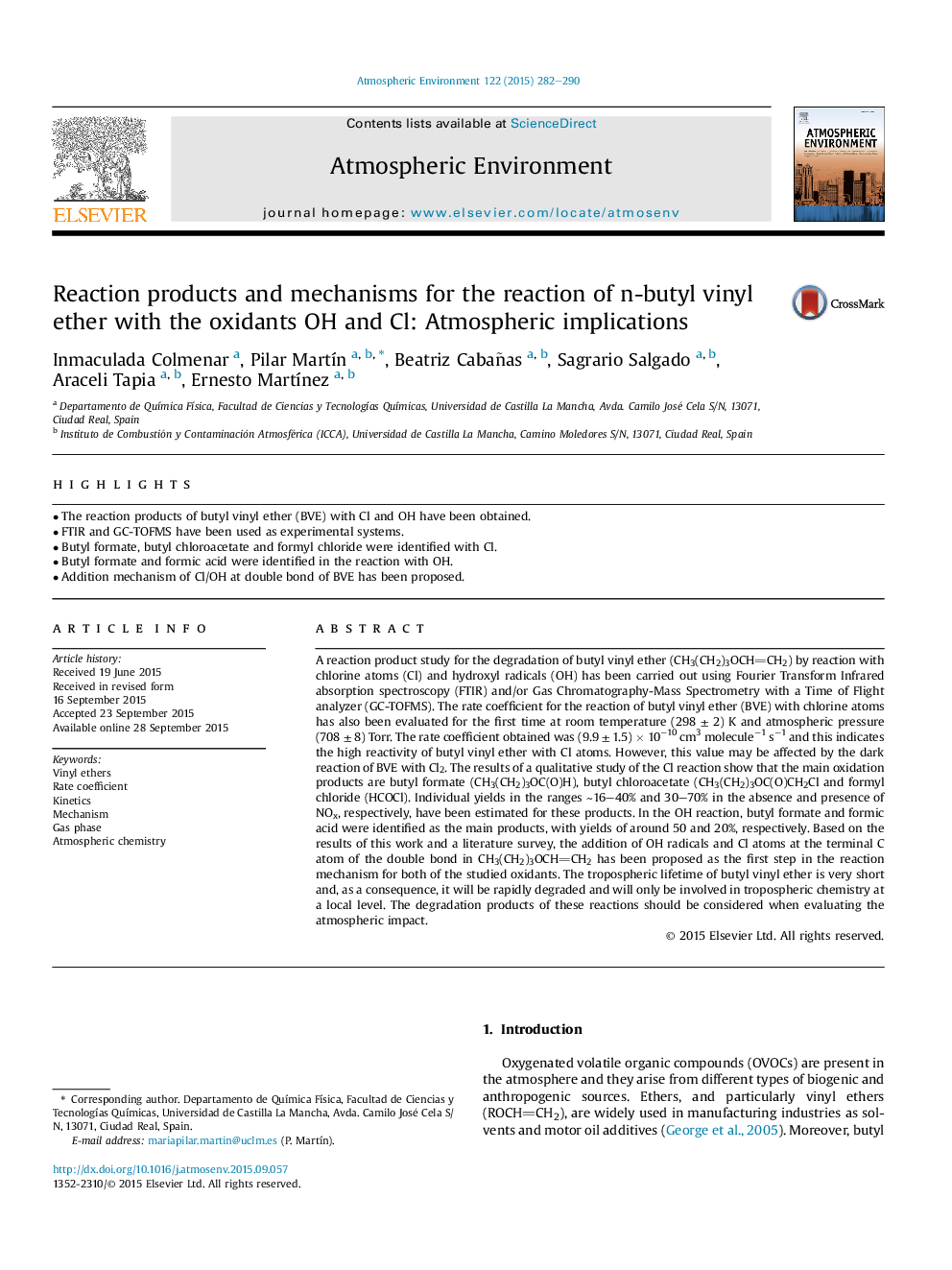| کد مقاله | کد نشریه | سال انتشار | مقاله انگلیسی | نسخه تمام متن |
|---|---|---|---|---|
| 6336995 | 1620349 | 2015 | 9 صفحه PDF | دانلود رایگان |
عنوان انگلیسی مقاله ISI
Reaction products and mechanisms for the reaction of n-butyl vinyl ether with the oxidants OH and Cl: Atmospheric implications
دانلود مقاله + سفارش ترجمه
دانلود مقاله ISI انگلیسی
رایگان برای ایرانیان
کلمات کلیدی
موضوعات مرتبط
مهندسی و علوم پایه
علوم زمین و سیارات
علم هواشناسی
پیش نمایش صفحه اول مقاله

چکیده انگلیسی
A reaction product study for the degradation of butyl vinyl ether (CH3(CH2)3OCHCH2) by reaction with chlorine atoms (Cl) and hydroxyl radicals (OH) has been carried out using Fourier Transform Infrared absorption spectroscopy (FTIR) and/or Gas Chromatography-Mass Spectrometry with a Time of Flight analyzer (GC-TOFMS). The rate coefficient for the reaction of butyl vinyl ether (BVE) with chlorine atoms has also been evaluated for the first time at room temperature (298 ± 2) K and atmospheric pressure (708 ± 8) Torr. The rate coefficient obtained was (9.9 ± 1.5) Ã 10â10 cm3 moleculeâ1 sâ1 and this indicates the high reactivity of butyl vinyl ether with Cl atoms. However, this value may be affected by the dark reaction of BVE with Cl2. The results of a qualitative study of the Cl reaction show that the main oxidation products are butyl formate (CH3(CH2)3OC(O)H), butyl chloroacetate (CH3(CH2)3OC(O)CH2Cl and formyl chloride (HCOCl). Individual yields in the ranges â¼16-40% and 30-70% in the absence and presence of NOx, respectively, have been estimated for these products. In the OH reaction, butyl formate and formic acid were identified as the main products, with yields of around 50 and 20%, respectively. Based on the results of this work and a literature survey, the addition of OH radicals and Cl atoms at the terminal C atom of the double bond in CH3(CH2)3OCHCH2 has been proposed as the first step in the reaction mechanism for both of the studied oxidants. The tropospheric lifetime of butyl vinyl ether is very short and, as a consequence, it will be rapidly degraded and will only be involved in tropospheric chemistry at a local level. The degradation products of these reactions should be considered when evaluating the atmospheric impact.
ناشر
Database: Elsevier - ScienceDirect (ساینس دایرکت)
Journal: Atmospheric Environment - Volume 122, December 2015, Pages 282-290
Journal: Atmospheric Environment - Volume 122, December 2015, Pages 282-290
نویسندگان
Inmaculada Colmenar, Pilar MartÃn, Beatriz Cabañas, Sagrario Salgado, Araceli Tapia, Ernesto MartÃnez,